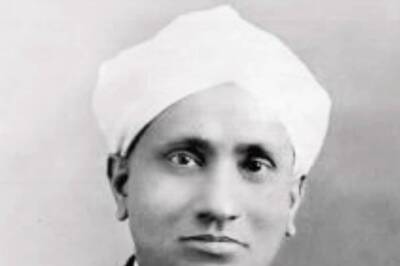
views
La Paz: A Jewish immigrant to Bolivia who made a fortune mining tin saved 10 times as many lives during the Holocaust than the star of Oscar-winning Hollywood blockbuster "Schindler's List," a journalist and writer told AFP.
Oskar Schindler was turned into a household name by the 1993 Hollywood epic directed by Steven Spielberg, telling the tale of the German industrialist who saved more than 1,000 Jews by employing them in his businesses in Nazi-occupied Poland.
But according to Veronica Ormachea, Moritz Hochschild saved 10,000 Jews from Adolf Hitler's gas chambers during World War II.
"It was an unprecedented historic event in the history of Jews in Bolivia and the world," Ormachea told AFP from her office in La Paz.
"It was a historic fact that he managed to save 10,000 Jews," although not his sister, who was killed at Auschwitz.
Born in Germany in 1881, Hochschild became one of Bolivia's three "tin barons" in the early part of the 20th century, alongside Simon Patino and Carlos Aramayo, who wielded great influence in the South American country until the 1952 revolution in which mining was nationalized.
In her historical novel "Los Infames" (the villains), Ormachea relates how thousands of European Jews arrived in the heart of South America as they fled Nazi terror.
Using the fictitious character of Boris Kominsky, the novel describes how the mining magnate helped save thousands of Jews.
The book opens with a young Kominsky in Poland in 1939 as he tries to convince his father to head for South America after hearing that Hochschild was helping citizens escape.
- New York letter -
While the book's main protagonist is a work of fiction, Ormachea insists that the stories told are real. She compiled them after years of research and interviews with descendants of the immigrants.
"They used ports in Italy and Lisbon to get out of Europe. They arrived at the port of Arica (in northern Chile) before taking the train to Bolivia," she said.
Ormachea points to a 1940 letter from Hochschild to James Rosenberg, a Jew living in New York, asking for financial help, as evidence to support her claims.
In the letter, Hochschild says he's managed to transport to Bolivia "between 9,000 and 10,000" Jews and that his plan, which had the support of Bolivia's military leader of the time, German Busch, was to bring 30,000 people to the country.
With help from two of Hochschild's companies, the Jews arriving in Bolivia were given farm work in the coca-growing region of Yungas, to the east of La Paz.
They were also given loans and Bolivia's 1940 census said there were 12,300 Jews living in the country.
- 'Unprecedented' -
Ormachea says Hochschild used his fortune to help Jews by providing passports, transport, food and the start of a new life in Bolivia.
"His historical, philanthropic and humanitarian work was unprecedented," she said.
And that makes the mining magnate a far more significant figure than Schindler, says Ormachea.
"Schindler saved 1,200 Jews (and) he was a member of the Nazi party; but Hochschild saved around 10,000 Jews with his own money."
Ormachea says Hochschild managed to convince his friend Busch, himself the descendent of German immigrants, of the advantages of bringing the Jewish population from Europe. Bolivia was one of the few countries that opened its arms to Jewish migrants both before and during World War II.
Hochschild has not gone down in Bolivian history as a good Samaritan, though. Rather, he's remembered as one of the foreigners who struck it rich exploiting natural resources in an impoverished country in South America, and who had incompetent, corrupt rulers under their thumbs.
Part of the story of "Bolivia's Schindler" was discovered in the archives of state mining company Comibol, which was formed in 1952 out of nationalized companies.
The forgotten archives, rediscovered in the last decade, were included by UNESCO in 2016 in its Memory of the World register.




















Comments
0 comment